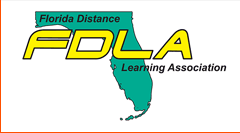Abstract
In the past 30 years, distance learning has come a long way in innovative technologies advancing opportunities for teaching and learning. In 2011, the public understands and accepts widely the once surprising concept of “Anytime, Anywhere” learning (Allen & Seaman, 2010). To expand our educational commitment to access and equity, this paper addresses the need and means to incorporate “Anyone” into this paradigm.
While we spend a great deal of time and effort teaching educators to adopt and design effective online learning, we focus much less on creating welcoming and accessible online learning environments for every student. This paper has three major sections: (1) defining the issues related to accessible online learning, (2) defining and providing examples of Universal Design Learning (UDL) and assistive technology easily applied to online classes, and (3) sharing strategies for online learning access by addressing policy issues, student needs and online course design. By introducing and discussing these areas of online course facilitation, our aim is to introduce new strategies and resources while also building awareness of the need to design our courses in higher education for the needs of all learners.
Included in
Online and Distance Education Commons, Teacher Education and Professional Development Commons
Including “Anyone” in the “Anytime, Anywhere” Paradigm: Strategies to Build Aceess to Distance Education
In the past 30 years, distance learning has come a long way in innovative technologies advancing opportunities for teaching and learning. In 2011, the public understands and accepts widely the once surprising concept of “Anytime, Anywhere” learning (Allen & Seaman, 2010). To expand our educational commitment to access and equity, this paper addresses the need and means to incorporate “Anyone” into this paradigm.
While we spend a great deal of time and effort teaching educators to adopt and design effective online learning, we focus much less on creating welcoming and accessible online learning environments for every student. This paper has three major sections: (1) defining the issues related to accessible online learning, (2) defining and providing examples of Universal Design Learning (UDL) and assistive technology easily applied to online classes, and (3) sharing strategies for online learning access by addressing policy issues, student needs and online course design. By introducing and discussing these areas of online course facilitation, our aim is to introduce new strategies and resources while also building awareness of the need to design our courses in higher education for the needs of all learners.

